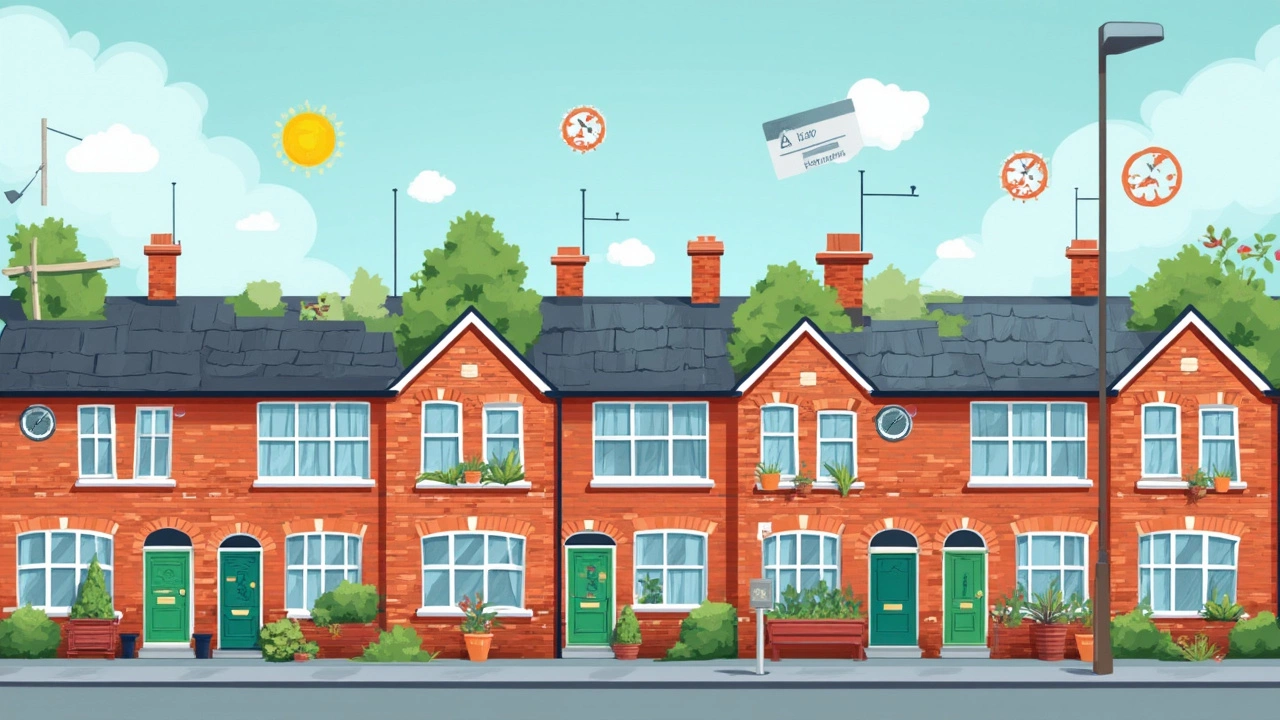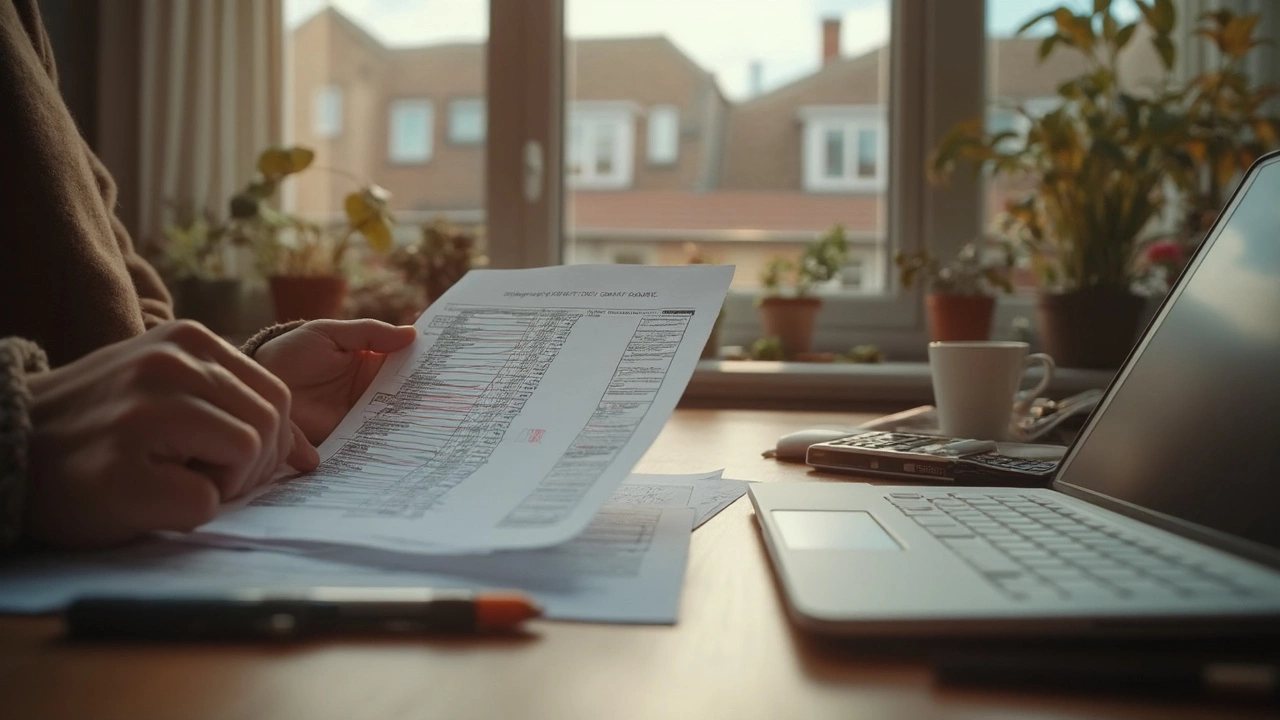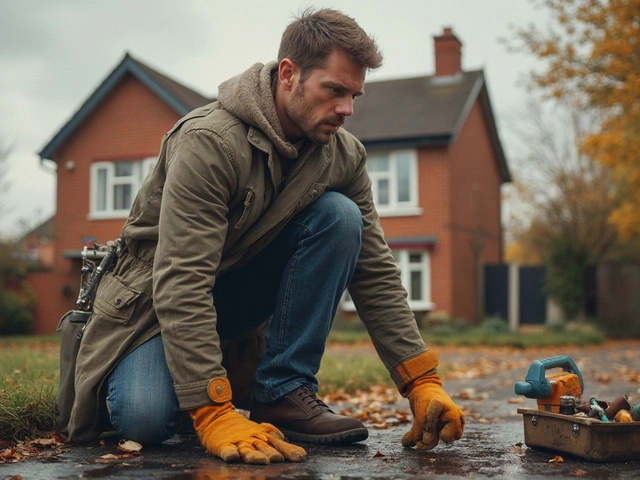Here’s a number that surprises a lot of people: a full roof replacement can run anywhere from $7,000 to $30,000, and sometimes even more, depending on your house and where you live. It’s easy to want to ignore your roof if it’s not leaking right now, but waiting usually means bigger bills down the line. If you’re trying to figure out how to budget for a roof, you’ll want real numbers and a plan—no hoping and guessing.
First thing most people miss? The total cost isn’t just about the shingles. There’s labor, disposal, underlayment, permits, and sometimes wood repairs—they add up fast. Roof size, pitch, materials, and the company you hire also swing the price by thousands. You need a good ballpark before you start calling contractors, so you aren’t shocked when you see actual bids.
Did you know roofs can cost more if your house has skylights, chimneys, or lots of valleys? Each of those bumps up the price, and roofers sometimes need to fix unexpected problems under the old shingles. A little research up front goes a long way in keeping your budget on track.
- What Goes Into Roofing Costs?
- Finding Realistic Estimates
- Saving and Paying for Your Roof
- Tips to Avoid Budget Surprises
What Goes Into Roofing Costs?
You probably hear a number from your neighbor or cousin about their new roof and wonder, "Why did it cost so much?" The truth: there’s a mix of stuff that makes up the final price tag—some you see, some you don’t. If you want to budget for a roof, break it down so you know what to expect.
The main things that drive up the cost include:
- Materials: Asphalt shingles are the cheapest, but if you want metal, tile, or slate, the price goes up—sometimes by three times or more for premium stuff.
- Labor: Good roofers don’t work for peanuts. Labor can add up to 40%–60% of the total.
- Roof size and pitch: The bigger and steeper, the more expensive. It takes more time, more safety gear, and more materials.
- Removal of old roofing: Tearing off old shingles takes hard work, and there are dumpster fees for hauling it away. Some roofers charge $1–$5 per square foot for this job alone.
- Wood repair: If your decking (the wood under your shingles) is rotten, you’ve got to fix it first. Roofers usually don’t know how bad it is until they peel everything off.
- Extra features: Chimneys, skylights, dormers, and complex roof shapes mean more labor and more materials.
- Permits and inspections: Most places require a permit for roofing (some as much as $500), and some local codes mean extra work for your roofer.
Here’s how an average roof bill might look, based on a typical 2,000-square-foot roof:
| Cost Item | Typical Range |
|---|---|
| Asphalt Shingles | $6,000 - $10,000 |
| Removal & Disposal | $1,500 - $3,000 |
| Labor | $4,000 - $7,000 |
| Permits/Fees | $200 - $500 |
Some folks forget about gutters, flashing, or even nails and ice barriers. Those little things add up. And if your roof is older or you’ve had leaks before, be ready for unexpected wood repairs. Unlike buying a TV, you can’t just bring your roof back if you’re unhappy—so paying for good materials and a solid crew is worth it. Before you do anything, break down each part in your quote and ask contractors about every charge you see.
Finding Realistic Estimates
Getting realistic estimates isn’t about picking the first roofer from a Google search or taking your neighbor’s word for what they paid ten years ago. Markets change fast and materials jump in price—like asphalt shingles, which went up almost 40% between 2021 and 2024. If you want numbers you can trust, you’ll need to do a little homework.
Start with at least three written estimates from reputable roofing companies. Make sure each estimate breaks down labor, materials, disposal, and permits separately. If estimates don’t spell these out, ask. Apples-to-apples comparisons are the only way you’ll know if someone’s slipping in “extras” or cutting corners.
Try out a few online roofing calculators—HomeAdvisor is popular, and the NRCA (National Roofing Contractors Association) offers up-to-date guidance. Most of these tools want your ZIP code, roof size, and material choices. The closer you match your own situation, the more accurate your budget plan will be.
“A good roofing estimate should detail products and manufacturer names, explain what’s included, and set expectations for clean-up and warranties,” says the National Roofing Contractors Association. “If it’s vague, that’s a red flag.”
| Material | Average Price (per sq ft, 2025) |
|---|---|
| Asphalt Shingles | $4.00 - $7.50 |
| Metal Roofing | $7.50 - $15.00 |
| Clay Tile | $10.00 - $18.00 |
Don’t forget, your budget for a roof should leave room for surprises. Some pros recommend setting aside 10-15% extra just in case they find rotten boards or extra repairs. Better to have it and not need it than the other way around.
Finally, be wary of lowball offers. If one estimate is way under the others, there’s usually a catch—like cutting out warranty coverage or hiring cheap labor. Reliable roofers charge what the job is worth. Paying a fair rate saves headaches later.

Saving and Paying for Your Roof
Roofing isn’t cheap, so every dollar you save matters. Start by figuring out how much your roof will actually cost. Get at least three estimates from local roofers. Seeing those numbers side by side makes it clear what a fair price looks like, and you might spot a deal or a red flag. Make sure the quotes break down materials, labor, old roof removal, and any extras—they should spell everything out in plain English.
Most folks don’t have a pile of cash sitting around for home repairs, so it’s smart to look at options: can you stash away money for a year, or do you need to move faster? If you’re planning ahead, set up a special savings account just for your roof project—tossing a little in each month really adds up over time. Even 50 bucks a month gets you to $600 a year, and every chunk helps cut down what you need to borrow.
If the roof can’t wait, check out these ways people usually cover the costs:
- Home equity loans or lines of credit: These usually have lower rates and longer terms than credit cards, but you do need decent equity built up in your house.
- Personal loans: These are quick, and sometimes you can get approved the same week—but watch out for higher interest rates.
- Credit cards: Only for emergencies or small jobs, since interest can get out of control fast.
- Some roofing companies offer payment plans. Watch for fine print and compare with a regular loan to make sure it’s not just shifting the pain around.
Insurance might help if you have storm damage or another covered event. But for old age or wear and tear, you’re likely on your own. Double-check your policy—sometimes things like hail damage are covered, which could save you thousands.
One more thing: don’t forget about surprise expenses. A 2022 survey showed that nearly 20% of roof projects went over budget because of hidden rot, bad decking, or missed permits. Build in a 10-15% cushion when you’re planning—so if you think you’ll need $12,000, plan for $13,500 just in case.
| Payment Option | Typical Interest Rate (2024) | Average Time to Fund |
|---|---|---|
| Home Equity Loan | 6.5% - 9.0% | 2-4 weeks |
| Personal Loan | 7.0% - 13.0% | 1 week |
| Credit Card | 18%+ | Immediate |
| Roofing Company Financing | Varies, often 8% - 14% | 1-2 weeks |
Pick what matches your budget and timeline. The point is to plan ahead, compare every offer, and pad the numbers so you’re not sweating if surprises pop up. That’s real peace of mind when your roof starts coming off.
Tips to Avoid Budget Surprises
If you want to avoid blowing your budget on roofing, don’t just go with the first quote and cross your fingers. There are a few tried-and-true ways to keep your costs from creeping up and wrecking your plans.
- Get multiple estimates. Don’t assume every roofer charges the same. Ask at least three companies to break down every detail. This gives you a real average, not just a wild guess. You’d be surprised—estimates can differ by thousands for the exact same job.
- Ask for a line-by-line breakdown of costs. This helps you spot inflated fees or missing items. Anything that looks vague? Get them to explain in plain English.
- Factor in the extras (skip this, and you’ll regret it). New plywood if there’s rot, replacing vents, or paying for dumpster rental almost always come up. Roofers report that about 1 in 4 roofing jobs run into wood damage you can’t see until the old materials are off.
- Take a close look at the warranty. Some companies pitch a low price but offer weak coverage or upcharge for little things later on. Compare them before you commit.
- Check your homeowner’s insurance. If your roof is leaking from storm damage, your policy might help cover some repairs or replacements. Call and ask; don’t just assume they’ll say no.
Some folks find it helpful to include a buffer—usually 10-15%—on top of the estimate to cover surprise costs. Here’s how that could look if your main figure is $12,000:
| Estimate | Recommended Buffer (15%) | Total Budget |
|---|---|---|
| $12,000 | $1,800 | $13,800 |
One last thing: don’t pay for the total job up front. A solid company usually asks for a deposit (often 10-30%), with the rest due at finish. Paying in stages keeps everyone honest and your budget for a roof safer.





